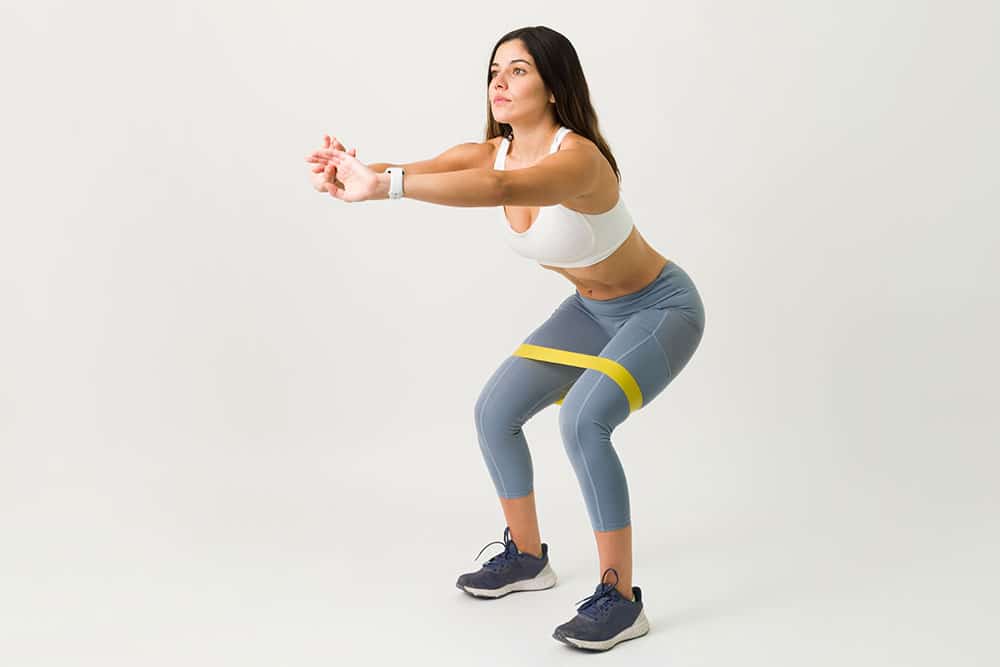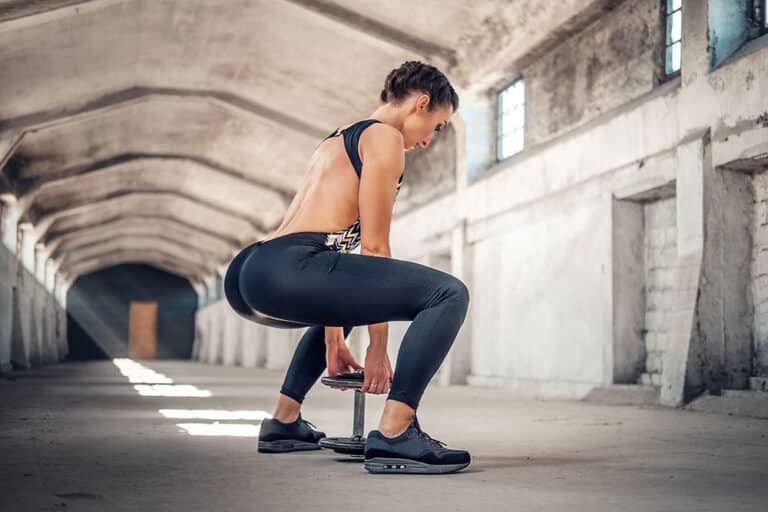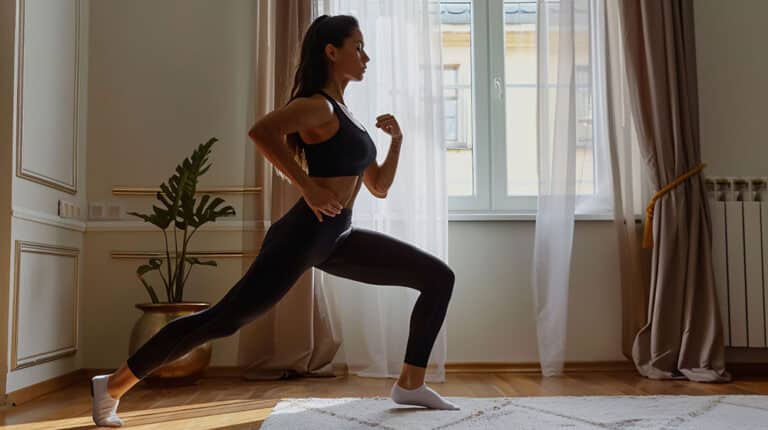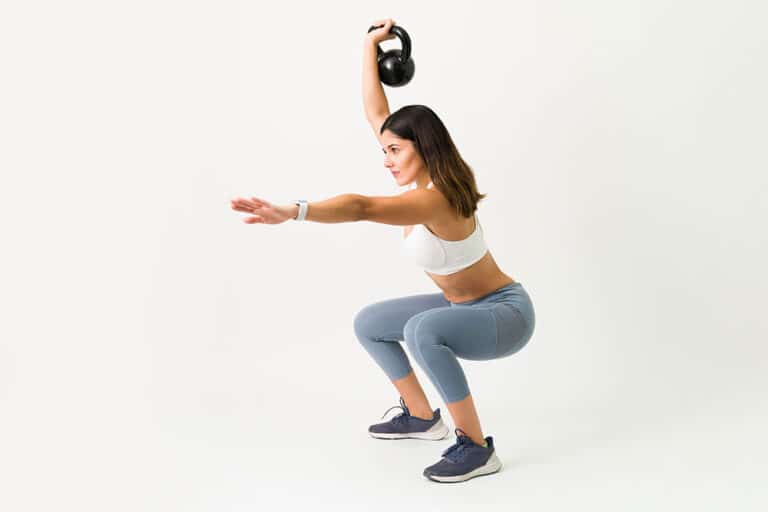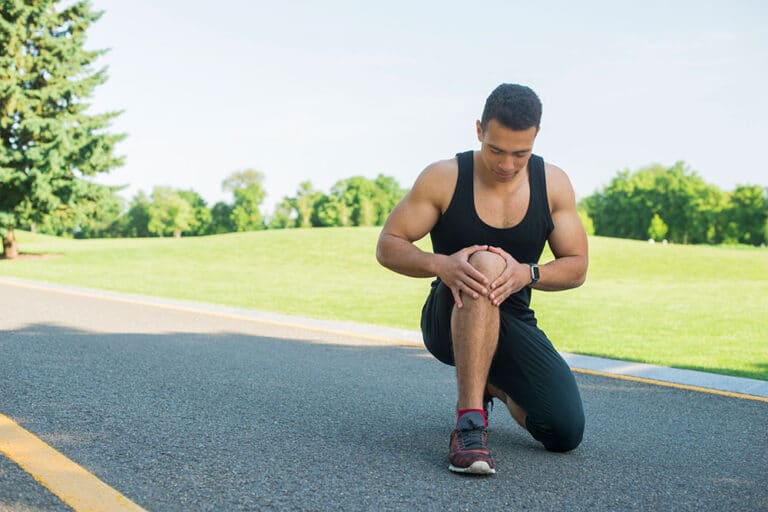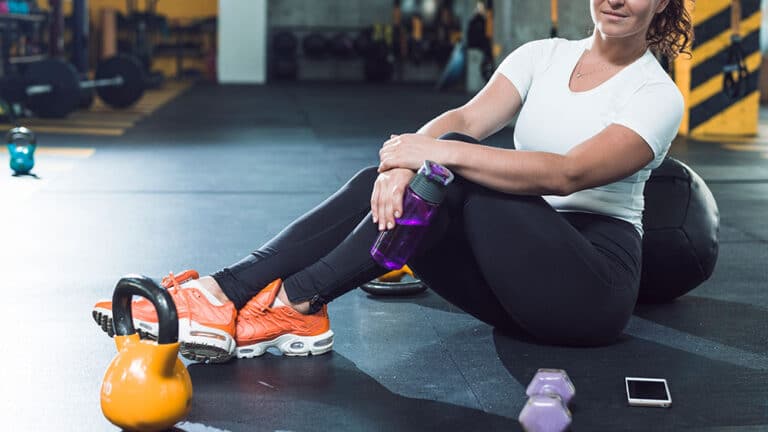Leg Exercises Basics
Importance of Leg Workouts
Leg workouts are essential for maintaining overall health and fitness. They engage multiple muscle groups simultaneously, which helps in building muscle mass, increasing strength, and improving balance (BetterMe). They also play a crucial role in weight management and boosting metabolism.
Effective leg workouts can also enhance cardiovascular health due to their high intensity. Engaging large muscle groups such as the quadriceps, hamstrings, glutes, and calves improves blood circulation and strengthens the heart.
Benefits of Wall Exercises
Wall exercises for legs offer several advantages that make them a popular choice for fitness enthusiasts. They can help improve balance, support fitness goals, and break free from a sedentary lifestyle. These exercises are incredibly convenient because most people have access to a wall, making them suitable even for seniors and individuals with mobility challenges (BetterMe).
The key benefits of wall exercises include:
- Convenience: No special equipment is needed.
- Versatility: Suitable for various fitness levels.
- Balance Improvement: Helps enhance stability and coordination.
- Accessibility: Ideal for seniors and people with limited mobility.
- Low-Impact: Reduces the risk of injury and is gentle on joints.
For those who want specific workout tips, check out our guide on morning leg exercises or leg exercises while traveling.
Here’s an example of how you might structure a comprehensive wall-based leg workout:
| Exercise | Sets | Repetitions |
|---|---|---|
| Wall Sit | 3 | 45-60 seconds |
| Wall Squat | 3 | 12-15 |
| Wall Lunge | 3 | 10-12 per leg |
| Leg-Up Wall Crunch | 3 | 15-20 |
For more detailed guidance on structuring workouts, visit our article on leg workout frequency bodyweight.
To maximize results, always remember to perform additional stretches post-workout, such as a glute and hamstring stretch held for 3-4 sets of 45-60 seconds. This aids recovery and enhances the benefits gained from the wall-based exercises.
Wall Sits
Wall Sit Technique
Wall sits are a great exercise for strengthening your legs and core. They are simple to do but require proper form to gain the most benefits and avoid injury.
- Stand with your back against a wall.
- Slowly slide down until your thighs are parallel to the ground.
- Ensure that your knees are directly above your ankles.
- Keep your back flat against the wall, and engage your core.
- Hold the position for the desired amount of time, then push through your heels to return to the standing position.
Common mistakes to avoid:
- Ensure thighs are parallel to the ground.
- Keep knees from extending beyond the ankles.
- Distribute weight on the heels, not toes.
- Return to standing by pushing through the heels.
Muscles Engaged in Wall Sits
Wall sits are a compound exercise that engages multiple muscle groups, primarily targeting the quadriceps but also involving other muscles for stability and strength.
| Muscle Group | Role in Wall Sit |
|---|---|
| Quadriceps | Primary muscle group engaged, responsible for extending the knee. |
| Hamstrings | Assist in bending the knee. |
| Adductors | Help stabilize the legs in place. |
| Hip Flexors | Provide additional stability to the hip joint. |
| Glutes | Support in maintaining the position by extending the hips. |
| Calves | Maintain balance and support the ankles. |
| Core | Engage to stabilize the torso and maintain proper alignment. |
Proper engagement of these muscles promotes better posture and alignment, which adds to the overall effectiveness of the exercise.
Variations of Wall Sits
To keep wall sits challenging and to target different muscle groups, you can try several variations:
- Single-Leg Wall Sit: Lift one leg off the ground while holding the wall sit. Alternate legs to balance the workout.
- Wall Sit with Calf Raise: While in the wall sit position, lift your heels off the ground and balance on your toes.
- Weighted Wall Sit: Hold dumbbells or place a weight plate on your thighs to increase the intensity.
- Abduction Wall Sit: Place an exercise ball or object between your knees, and squeeze it to engage inner thighs.
- Wall Sit March: While holding the wall sit, alternate lifting one knee towards your chest to engage the hip flexors and maintain core stability.
Explore these variations to keep your workouts dynamic and challenging. For more leg exercise ideas, check out our articles on how to do bodyweight squats and bodyweight leg challenge.
Wall Squats
Wall squats are an excellent addition to any lower body workout routine. They offer numerous benefits, target key muscle groups, and can be modified to suit different fitness levels. Let’s dive into these aspects.
Wall Squat Benefits
Wall squats are beneficial for improving leg strength and stability. They incorporate an isometric pause, which can be particularly helpful for those experiencing joint pain or conditions like arthritis. Wall squats enhance overall leg endurance and can also improve joint stability and mobility.
Some key benefits include:
- Improved quadriceps strength
- Enhanced knee extension
- Better hip movement
- Increased ankle joint stability
- Reduced joint pain, especially for those with knee osteoarthritis (Hinge Health)
Targeted Muscles in Wall Squats
Wall squats effectively engage several major muscle groups in the lower body. Here’s a closer look at the muscles worked:
| Muscle Group | Function |
|---|---|
| Quadriceps | Knee extension |
| Hamstrings | Hip movement |
| Gluteal muscles | Stabilizes hip |
| Calves | Ankle joint stability |
By targeting these muscle groups, wall squats contribute to improved leg strength and overall lower body functionality. For more exercises that target these muscles, check out our guide on [how to do bodyweight squats].
Modifications for Wall Squats
Wall squats can be modified to cater to different fitness levels, making them versatile and adaptable. Here are some modifications:
- Exercise Ball: Place an exercise ball between your back and the wall for additional support and stability.
- Adjust Hold Angle and Time: Begin with shorter hold times and less depth in the squat. Progressively increase both as strength and endurance improve.
- Adding Dumbbells: Hold dumbbells in your hands to add resistance and intensity.
- Single-Leg Wall Sits: Shift your weight to one leg and extend the other leg out for increased difficulty. This challenges balance and further intensifies the workout.
For those looking to gradually increase the challenge of their leg workouts, the progression from basic wall squats to single-leg variations can be particularly effective. Explore more challenging exercises in our article on [how to do pistol squats].
Making use of these modifications allows anyone—from beginners to advanced fitness enthusiasts—to integrate wall squats into their routine effectively. For additional resources and to enhance your workout program, check out our articles on [leg exercises while traveling] and [leg workout frequency bodyweight].
Wall Leg Exercises
Wall Lunge
Wall lunges are a dynamic exercise that targets multiple muscle groups, including the quadriceps, hamstrings, glutes, and calves (BetterMe). To perform a wall lunge:
- Stand with your back to a wall.
- Place your right foot behind you, pressing the sole against the wall.
- Lower your body into a lunge position, ensuring your front knee is aligned with your ankle.
- Push through your front heel to return to the starting position.
- Repeat on the other side.
This exercise enhances balance and coordination while providing stability benefits similar to other bodyweight lunge variations.
| Muscle Group | Primary Muscle | Secondary Muscles |
|---|---|---|
| Quadriceps | Rectus femoris | Vastus lateralis |
| Hamstrings | Biceps femoris | Semimembranosus |
| Glutes | Gluteus maximus | Gluteus medius |
| Calves | Gastrocnemius | Soleus |
Figures from Hinge Health
Leg-Up Wall Crunch
Leg-up wall crunches are an effective way to strengthen both the legs and the core. This exercise primarily targets the rectus abdominis and obliques while engaging the quads and hamstrings. To perform a leg-up wall crunch:
- Lie on your back with your legs extended up the wall.
- Place your hands behind your head for support.
- Tighten your core and lift your shoulders off the ground in a crunching motion.
- Lower your shoulders back down, keeping your legs in place.
- Repeat.
This exercise can be included in a quick leg workout no equipment routine for added core strengthening.
Other Wall Exercises
In addition to wall lunges and leg-up wall crunches, there are several other wall exercises beneficial for leg strength and stability:
- Wall Sits: Excellent for building muscular endurance in the legs while engaging the core (NASM Blog).
- Wall Bridges: Target the glutes and hamstrings, adding stability to the hips (BetterMe).
- Wall Planks: Strengthen the core and stabilizer muscles in the legs.
For a comprehensive workout routine, consider customizing your session with these exercises. Explore more in our article on morning leg exercises and leg strengthening for runners.
For more details on performing these exercises and avoiding common mistakes, refer to our section on safety tips for wall exercises.
Workout Guidelines
Creating an effective and balanced leg workout routine with wall exercises requires understanding how to structure sets, repetitions, customize the movements for specific needs, and incorporate proper breathing techniques.
Set and Repetition Recommendations
To maximize the benefits of wall exercises for leg strength and stability, it is crucial to follow proper set and repetition guidelines. Performing a total of 15-24 sets of leg exercises in each workout session is recommended for optimal results (BetterMe).
Here’s a breakdown for different wall exercises:
| Exercise | Sets | Repetitions/Duration |
|---|---|---|
| Wall Sits | 3-4 | 20-60 seconds |
| Wall Squats | 3-4 | 12-15 repetitions |
| Wall Lunges | 3-4 | 10-12 repetitions per leg |
| Leg-Up Wall Crunch | 3-4 | 15-20 repetitions |
For each exercise, aim to complete 3-4 sets to fully engage the target muscle groups. The duration for standard wall sits ranges from 20-60 seconds, which can be varied to target different muscle groups (Mirafit).
Breathing Techniques
Proper breathing techniques are essential during workouts to ensure muscle efficiency and enhance your overall performance. Follow these guidelines:
- Inhale during the lowering phase of movements like wall squats or lunges, filling your lungs with oxygen to support muscle activity.
- Exhale during the exertion phase, such as standing up from a squat or holding a wall sit position, to engage your core and maximize strength output.
- Maintain a steady breathing rhythm to avoid dizziness and ensure a consistent oxygen supply to your muscles.
Customizing Your Leg Workout
Customizing your leg workout allows you to target specific fitness goals, accommodate physical limitations, and keep routines interesting. Here are some tips to tailor your wall exercise regimen:
- Incorporate Variations: Include different variations of wall sits and lunges to target various muscle groups and add variety to your routine. For example, incorporating side wall sits can emphasize inner thigh muscles.
- Progress Gradually: Start with lower durations or repetitions and increase them as your strength and endurance improve.
- Add Resistance: Use resistance bands or hold weights while doing wall squats or lunges to increase the intensity of your workout.
- Focus on Form: Ensure proper form to prevent injury and maximize the effectiveness of each exercise. Proper alignment and technique are crucial for getting the most out of your wall exercises. For more tips, visit our page on how to do bodyweight squats.
- Include Rest Periods: Allow adequate rest between sets to let your muscles recover. Typically, a rest period of 30-60 seconds between sets is recommended.
Customizing your workout not only enhances its effectiveness but also keeps you engaged and motivated. Explore various exercises, like the ones discussed in our article on wall exercises for legs, to maintain a well-rounded leg workout routine.
For more information on specialized leg workouts, check out our guides on leg exercises for bad knees, leg exercises for elderly, and morning leg exercises.
Building a personalized, effective leg workout plan with wall exercises can significantly enhance your leg strength, stability, and overall fitness. Keep experimenting and adjusting your routine to find what works best for you.
Safety and Common Mistakes
Embarking on a fitness journey with [wall exercises for legs] is commendable, but it’s important to prioritize safety and correct form to maximize effectiveness and reduce the risk of injury.
Proper Form in Leg Exercises
Maintaining proper form is crucial for any leg exercise, including wall-based workouts. Here are key elements to focus on:
- Alignment: Ensure that your knees are aligned with your toes to avoid undue stress on the joints.
- Core Engagement: Activate your core muscles to stabilize your body and support your spine.
- Back Position: Keep your back flat against the wall to maintain a neutral spine and prevent strain.
- Foot Placement: Your feet should be placed shoulder-width apart, directly under your knees during exercises like wall sits or wall squats.
Avoiding Mistakes in Wall Workouts
Common errors can hinder progress and lead to injury. Avoid these mistakes for safe and effective workouts:
- Incorrect Knee Position: Avoid letting your knees extend past your toes, which can stress the knee joints.
- Slouching: Maintaining a straight back against the wall prevents slouching, which can lead to back pain.
- Improper Foot Placement: Ensuring that your feet are correctly positioned can help distribute your weight evenly and provide stability (Hinge Health).
- Holding Breath: Breathe steadily and rhythmically to ensure proper oxygen flow to your muscles.
Safety Tips for Wall Exercises
Incorporating safety measures helps you get the most out of your workouts while minimizing risks:
- Warm-Up: Always start with a warm-up to prepare your muscles and joints. This can include dynamic stretches or a light cardio activity.
- Progress Gradually: If you’re new to wall exercises, start with shorter durations and gradually increase as your strength improves.
- Use Support: If necessary, place a stability ball between your back and the wall for extra support.
- Stay Hydrated: Drink water before, during, and after your workout to stay hydrated.
To ensure you’re on the right track, consider integrating these tips into your routine. For example, our guide on [how to do bodyweight squats] can offer additional insights into maintaining good form for lower body exercises. Similarly, exploring [leg strengthening for runners] can provide further tips for building robust leg muscles without compromising safety.
By adhering to these safety practices and avoiding common mistakes, you can enjoy the full benefits of your [wall exercises for legs] and achieve your fitness goals effectively.
- About the Author
- Latest Posts
Johnnie D. Jackow Sr., the founder and CEO of Total Body Fitness, Worldwide, has a long-standing career in the fitness industry. He began as a certified personal trainer in the mid-90s and soon after authored his first weight loss book in 1998. This led to the launch of Total Body Fitness, Nationwide in the USA at the same time. Johnnie gained recognition as the fitness guru of his time, running infomercials on local TV late at night in Houston, Texas. Over the years, he has helped more than 40,000 individuals from all over the world achieve their health and fitness goals. With over 60,000 hours of documented training in integrative functional medicine, he completed his PhD in human physiology in 2010. His primary objective is to assist people in reaching their health and fitness goals through alternative approaches rather than relying solely on conventional medicine and pharmaceutical drugs. Today, with almost three decades of experience under his belt, Johnnie continues to be a leader in health and fitness.

